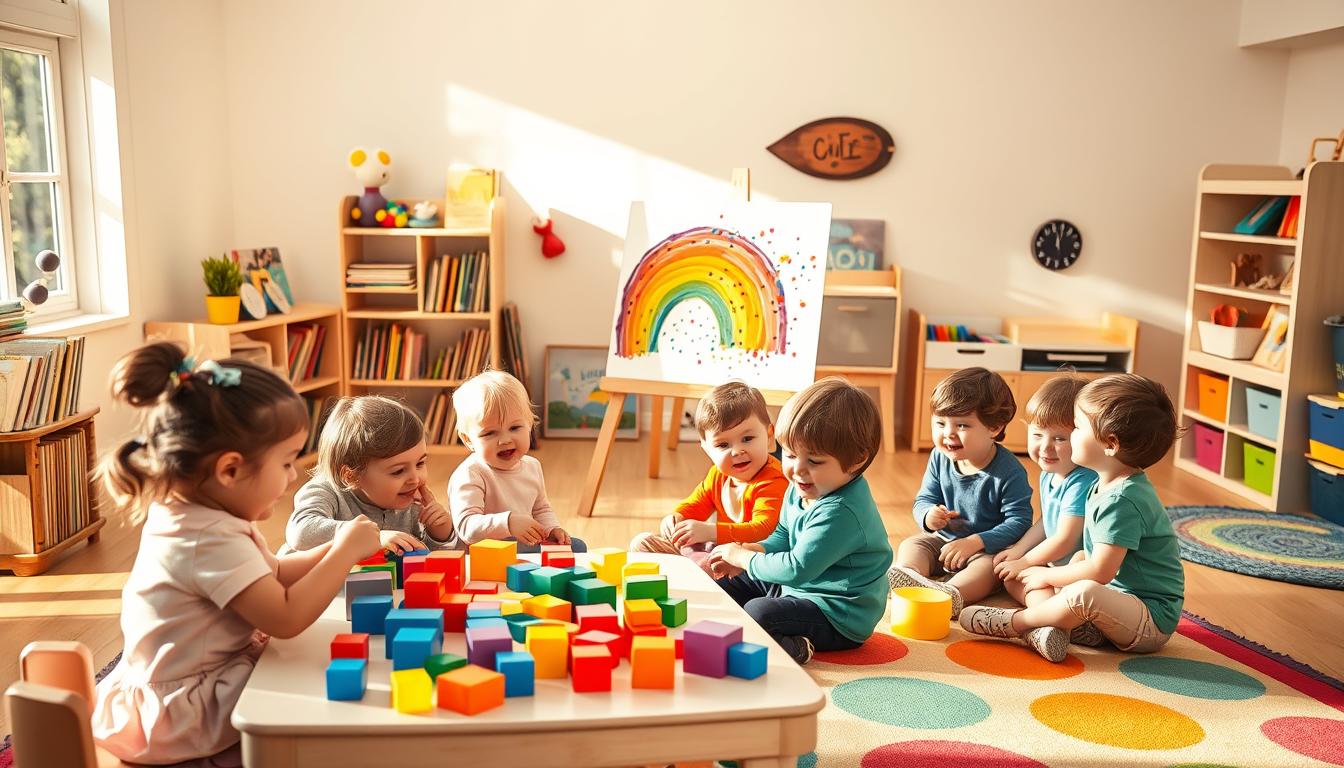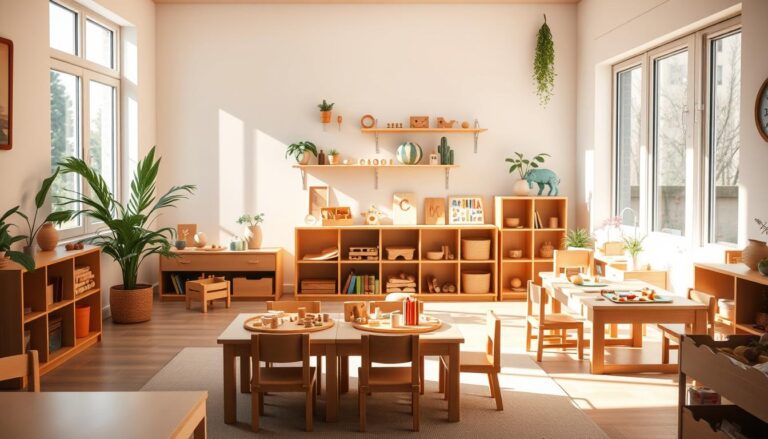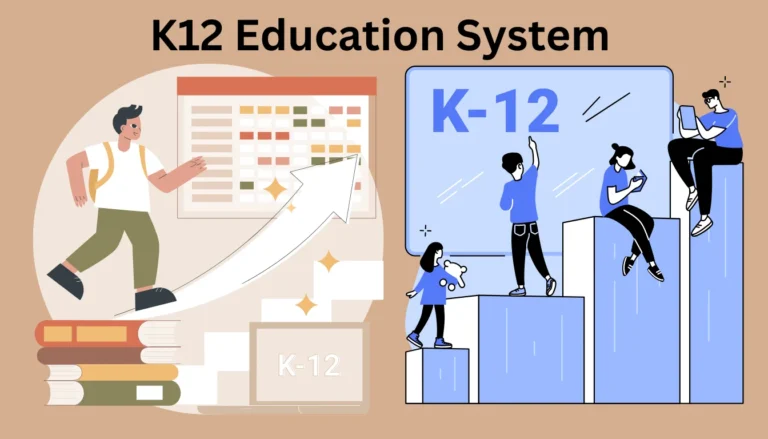Color Recognition Activities for Toddlers
Did you know that by age 2, most children start recognizing and naming different shades around them? This early skill is more than just identifying red or blue—it’s a stepping stone to cognitive development.
Activities like finger painting or sorting games make learning fun and engaging. These methods not only help a child learn but also build motor skills and creativity. Research shows that playful activities are the best way to introduce new concepts.
In this guide, we’ll explore expert strategies to make color recognition a joyful experience. From everyday objects to creative games, we’ll show you how to turn the world into a vibrant classroom for your little one.
Understanding the Importance of Color Recognition in Early Childhood
Early exposure to colors plays a vital role in shaping a child’s cognitive abilities. Recognizing and naming different shades helps them understand the world around them. This skill is not just about identifying hues; it’s a foundation for learning and development.
Benefits of Early Color Learning
Introducing colors at a young age stimulates a child’s vocabulary and categorization skills. For example, when a kid learns to name a red apple, they start connecting words with objects. Research shows that clear language, such as naming the object first and then the color, improves learning outcomes.
Early color recognition also enhances memory and observation skills. Noticing a bright yellow sun or a green leaf helps children build cognitive links. These skills lay the groundwork for academic success later in life.
| Benefit | Description |
|---|---|
| Vocabulary Growth | Children learn new words by associating them with colors. |
| Cognitive Development | Recognizing colors helps in understanding patterns and categories. |
| Memory Enhancement | Observing colors strengthens recall and recognition abilities. |
The Role of Sensory Engagement in Development
Sensory activities, like finger painting or sorting objects, make learning fun and effective. Engaging multiple senses—visual, tactile, and auditory—strengthens a child’s ability to retain information. For instance, touching a soft blue ball or hearing the word “blue” reinforces the concept.
Everyday observations also play a key role. Pointing out a red car or a purple flower during a walk helps children connect colors to real-life objects. These experiences make learning natural and enjoyable.
By combining sensory engagement with daily interactions, we create a rich environment for a child’s growth. This approach not only builds color recognition but also fosters creativity and curiosity.
Practical Strategies for teaching colors toddlers
Primary colors are the perfect starting point for a child’s color education. Red, blue, and yellow are simple, bold, and easy to recognize. These hues provide a strong foundation for learning more complex shades later on.
We recommend starting with everyday objects. Point out a red apple or a blue block during playtime. This helps the child connect colors to real-world items. Repetition is key—say the color name often to reinforce the concept.
Introducing Primary Colors Effectively
Primary colors are ideal for early learning because of their clarity and contrast. Use activities like sorting games or matching crayons to make the process fun. For example, ask the child to find all the red toys in a pile.
Daily routines also offer great opportunities. Name the color of a shirt or a plate during meals. These small interactions build familiarity and confidence. Over time, the child will start identifying colors independently.
Building on Learning with Secondary Colors
Once primary colors are mastered, introduce secondary shades like green, orange, and purple. Mixing activities, such as finger painting, are a great way to teach these. Show how blue and yellow make green to spark curiosity.
Creative exploration is essential. Use colored blocks or food items to demonstrate mixing. For more ideas, check out this resource on color activities. Keep the pace relaxed and adapt to the child’s progress.
| Primary Colors | Secondary Colors |
|---|---|
| Red | Orange (Red + Yellow) |
| Blue | Green (Blue + Yellow) |
| Yellow | Purple (Red + Blue) |
Consistency and playfulness are the keys to success. Engage the child with games and activities that make learning feel like an adventure. This approach not only builds color recognition but also fosters creativity and joy.
Fun and Engaging Color Activities for Toddlers
Fun and interactive games can make learning about shades an exciting adventure for kids. By incorporating creative activities, we can help a child explore the world of colors in a way that feels natural and enjoyable. These methods not only reinforce recognition skills but also foster creativity and curiosity.
Creative Finger Painting and Mixing Colors
Finger painting is a fantastic way to introduce a child to the concept of mixing colors. Let them dip their fingers into primary shades like red, blue, and yellow. Show how blending these hues creates new ones, such as green or purple. This hands-on activity encourages sensory exploration and sparks curiosity.
Using tools like bubble wrap or sponges can add texture to their artwork. These small variations make the process even more engaging. Over time, the child will start to understand how colors interact, laying the foundation for more complex learning.
Interactive Sorting Games and Scavenger Hunts
Sorting games are another effective way to help a toddler learn color. Provide a mix of objects like blocks, toys, or buttons, and ask the child to group them by shade. Start with two colors and gradually increase the complexity as they improve.
Scavenger hunts add an element of excitement. Give the child a list of items to find, such as a red ball or a purple flower. This activity reinforces recognition skills while encouraging movement and exploration. For more ideas, check out our interactive activities designed for young learners.
These playful methods not only make learning fun but also integrate language and motor skill development. By allowing free exploration and offering gentle prompts, we can help a child build confidence and a deeper understanding of the world around them.
Integrating Color Learning into Daily Routines
Incorporating color recognition into daily routines can transform everyday moments into valuable learning opportunities. By weaving lessons into natural interactions, we help a child build familiarity with different shades in a stress-free way. This approach makes learning feel like a natural part of their day.
Everyday Conversations and Observations
One of the simplest ways to teach color is through daily conversations. Point out the hues of household items, like a red apple or a blue blanket. During walks, name the colors of flowers, cars, or leaves. These small moments help a child connect words to real-world objects.
Ask questions to make it interactive. For example, “Can you find something green?” This encourages active participation and reinforces their skill. Over time, these consistent observations build confidence and vocabulary without formal study pressures.
Using Books, Music, and Nursery Rhymes
Books are a fantastic tool for introducing different shades. Titles like “Brown Bear, Brown Bear, What Do You See?” highlight color names and patterns in a fun way. Reading together not only builds recognition but also fosters a love for storytelling.
Music and nursery rhymes also play a key role. Songs that mention colors, like “The Rainbow Song,” help with auditory learning and memory retention. These activities make learning enjoyable and engaging for a child.
- Use colored paper or art supplies during playtime to reinforce lessons.
- Encourage the child to name colors they see in their environment.
- Consistency in these small engagements builds long-term familiarity.
By integrating these strategies into daily life, we create a rich environment for learning. This approach not only helps a child recognize colors but also nurtures curiosity and creativity.
Tips for Reinforcing Color Learning with Toddlers
Reinforcing color recognition in young children can be both fun and effective with the right strategies. By using positive reinforcement and playful repetition, we can help a child build confidence and retain what they learn. These methods ensure that the process feels natural and enjoyable.
Positive Reinforcement and Playful Repetition
Praising a child when they correctly identify a color boosts their confidence. Simple phrases like “Great job naming the red ball!” encourage participation. Positive feedback makes learning feel rewarding and motivates them to keep trying.
Repetition is key to reinforcing new concepts. Incorporate color naming into everyday activities, such as pointing out a blue shirt or a yellow banana. This consistent practice helps a child retain information without feeling pressured.
Games are another effective way to reinforce learning. Sorting objects by color or playing scavenger hunts adds an element of fun. These activities not only teach color but also improve motor skills and cognitive abilities.
| Strategy | How It Helps |
|---|---|
| Positive Feedback | Boosts confidence and encourages participation. |
| Everyday Repetition | Reinforces learning through consistent practice. |
| Interactive Games | Makes learning fun while improving motor skills. |
Tailoring activities to a child’s pace ensures they stay engaged. For example, start with one color and gradually introduce more. This approach prevents overwhelm and builds a strong foundation.
For more ideas on making learning interactive, explore this resource on color activities. Consistency and encouragement are key to helping a child develop their ability to recognize and name colors.
Conclusion
Helping a child explore the world of hues can be both rewarding and impactful. Early exposure to different shades lays the foundation for cognitive growth and language development. By incorporating fun activities like sorting games or finger painting, we make learning a joyful experience.
Consistency is key. Everyday interactions, such as naming the color of food or pointing out objects during a walk, reinforce these concepts. Research shows that a patient and positive approach leads to better outcomes, ensuring the child builds confidence and curiosity.
We encourage parents and educators to use the strategies outlined in this guide. Every small opportunity to talk about color is a step toward broader learning. Revisit these techniques regularly and adapt them as your child grows, turning each day into a vibrant learning adventure.







